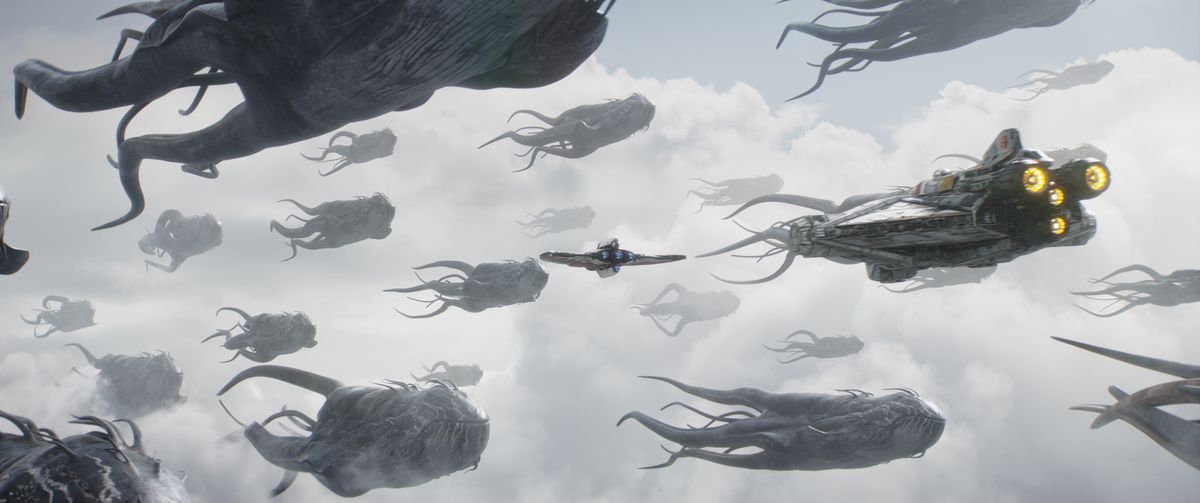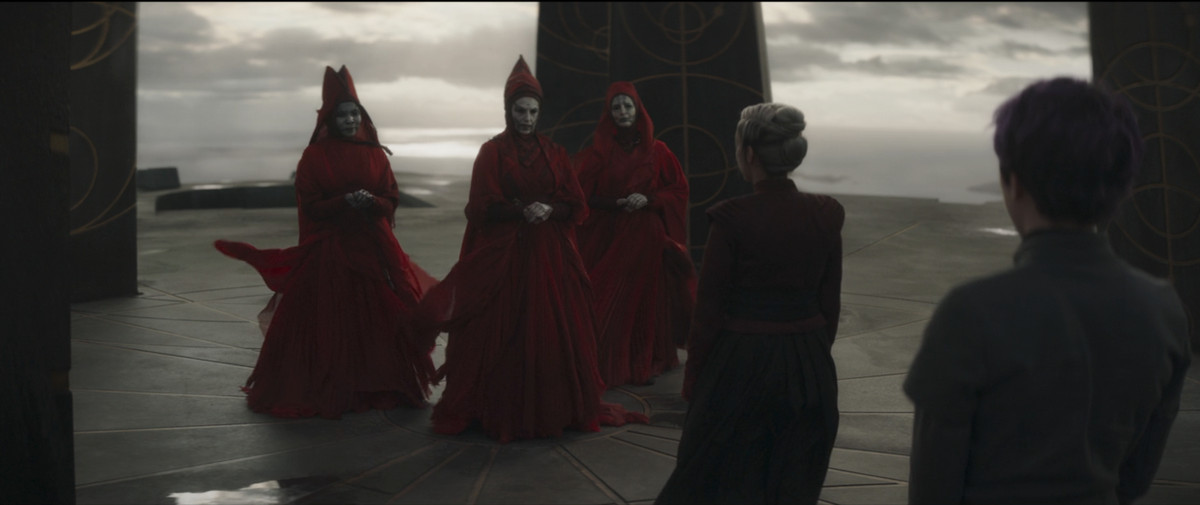Ahsoka has finally made Star Wars more fantasy than sci-fi
Star Wars has certainly had a fair share of fantasy elements built into its DNA from the beginning. From its central monomyth “The Chosen One” to its deployment of the “special weapon” trope to a central plot arc that can best be described as “storming a castle to save a princess”, Star Wars has not never been a purely science fiction story. Yet George Lucas made it clear that science fiction stories like those of Buck Rogers and Frank Herbert Dune had a much greater influence on him than the founding fantasy of JRR Tolkien.
Dave Filoni, on the other hand, is officially considered a huge Lord of the Rings fan. The current showrunner of Ahsoka and the person long considered by fans to be the heir to Lucas as the central shepherd of the Star Wars mythology, Filoni has infused his love of fantasy into many of his Star Wars stories over the years – but in Ahsokawe have the most overtly fantastical Star Wars yet.
These fantastical elements – and specifically the influence of JRR Tolkien’s writing – manifest throughout the series in both obvious and subtle ways. From the beginning, Ahsoka is presented as a Gandalf-like character, dressed in gray and working to prevent the return of a distant evil that most consider long gone, before suffering a death of sorts and returning with new determination , dressed in white. The early episodes of the series involve a quest narrative, a staple of fantasy fiction, as Ahsoka and Sabine work to find a specific item and prevent it from falling into the hands of their enemies. Even the clothing of these enemies emphasizes the fantasy elements, with Baylan Skoll and Shin Hati dressed in costumes more medieval and chivalrous than the usual robes and belts of the Jedi (or the black robes and belts of the Sith).
Image: Lucasfilm

Image: Lucasfilm
On a more structural level, the world of Ahsoka – while taking place in the familiar galaxy, far from hyperspace and lightsabers – is built like a fantasy world. Ahsoka retrieves Thrawn’s map from an ancient hidden temple, solving a puzzle to find the MacGuffin while being watched by stone avatars of long-dead characters to retrieve it. Although there are allusions here to Indiana Jones, another Lucasfilm property, the way the characters in Ahsoka moving through history is a key element of fantasy. Tolkien constantly moves his characters through physical reminders of civilizations long gone: reminders of history turned myth, from the mines of Moria to Argonath. This is seen again in Ahsoka on the world of Seatos, where the villainous Morgan Elsbeth uses the map recovered and stolen from Ahsoka to plot a course using the stone base of a henge left by an ancient extra-galactic civilization.
Morgan herself is a key example of the fantasy influence in Ahsoka. She is, for all intents and purposes, a witch (which is emphasized by the title of the second episode of the series, “Toil and Trouble”, a reference to Shakespeare’s witches. Macbeth), linked to the witches of Dathomir. Previously created (by Dave Filoni) in The Clone Wars Being Force-sensitives who wield the Force in a more mystical way, the Nightsisters represent a different take on the dark side from the more familiar, “there can only be two” power-hungry Sith. Darth Vader, the iconic Star Wars villain, is essentially a cyborg, a sci-fi fusion of man and machine. His master, Darth Sidious, launches robots of blue electrical energy. Morgan, meanwhile, casts spells on ancient objects, manipulating the Force in a way that manifests as supernatural green flames. Not only are his main sidekicks Baylan and Shin coded into more fantastical costumes, but the series’ fourth episode, “Fallen Jedi,” reveals that their companion Marrok is a zombie brought to life by Morgan’s Force magic.

Image: Lucasfilm
On Seatos, Morgan’s magic reveals that the map shows the way to Peridia. Baylan explains that Peridia is at the heart of a fairy tale told to the children of the Jedi Temple, making it another example of the series’ fantasy elements. In the same way that science fiction is invested in exploring the impact of a particular scientific concept, the relationship between the present and the myths and stories of the past is a founding element of fantasy fiction. Think about all the songs sung and stories told by the different characters throughout The Lord of the Rings, connecting the past to the present, or the way in which the political history of Westeros is almost a character in itself in George RR Martin’s “Song of Ice and Fire” series. Explicitly connect the current plot arc of Ahsoka – find Peridia’s map and follow it to Ezra and Thrawn – until a children’s fairy tale continues this tradition.
On a more metatextual level, Dave Filoni does a similar thing with the series itself, in terms of connecting it to the larger story of the Star Wars narrative. Filoni has stated his desire to weave the Star Wars stories into a cohesive narrative whole and has shown himself to be a creator (for better or sometimes for worse) who is not afraid to engage with that narrative story and play with its continuity. The Clone Wars is widely seen as his effort to add depth and nuance to the previous trilogy. Ahsoka is, essentially, a live-action fifth season of its animated film Rebels series, directly picking up on the plot threads established by that show. Not only does Filoni pepper the series with visual and plot clues from fantasy storytelling, but he uses past stories to add meaning to current stories in the same way that traditional fantasy stories do.
This all comes to a head in the series’ sixth episode, “Far, Far, Away,” which is full of fantastical touchstones, from characters moving through the ruins of an ancient civilization on Peridia, to a trio of witches speaking of the threads of destiny and using their abilities to empower an ambitious conqueror, to a visual aesthetic that more closely resembles that of Lucasfilm willow that Star Wars. Baylan remarks at one point that it feels like they’re in a fairy tale, and the episode feels like it. Characters ride horses through foreboding wastes, fight bandits, and befriend benign, neglected, and tiny species. The episode’s cold open sets all of this up, as Ahsoka and Huyang discuss the old tales of the Jedi Temple; it begins in the opening titles after Ahsoka asks Huyang to tell her one, and it begins, “a long time ago, in a galaxy far, far away”. The episode that follows might just be the story it tells.
It is, ultimately, the culmination of Filoni’s efforts to highlight the fantastical elements of Ahsoka, which is itself the culmination of his efforts to emphasize those elements in the overall narrative of Star Wars. To be clear, many sci-fi and Star Wars-specific elements remain in the series: spaceships, stormtroopers, and swords made not of steel but of light. But the Star Wars universe has always been a mix of influences, tones, and genres, with some stories making up certain elements over others. With AhsokaDave Filoni took his love of Lord of the Rings and fantasy storytelling and dialed those elements in Star Wars up to eleven.
